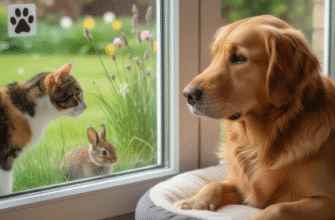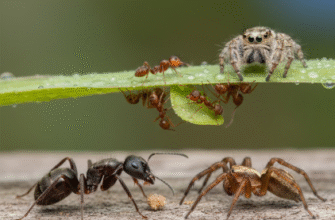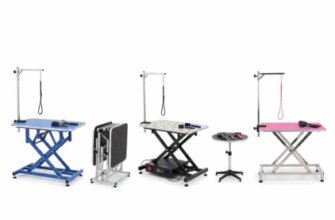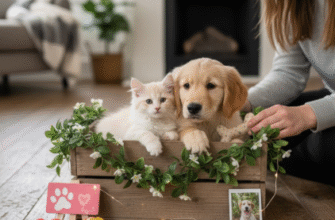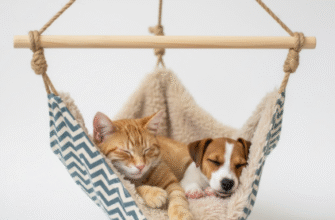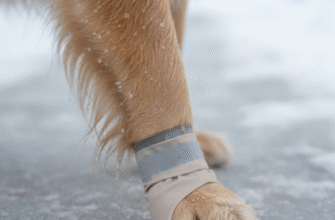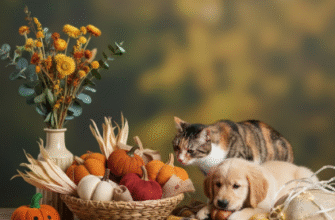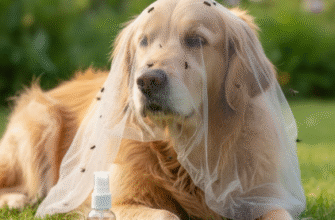Winter arrives, blanketing the world in white. For many, this means the routine task of clearing sidewalks and driveways. Shoveling snow might seem like a simple chore, but when you share your home with furry companions, it introduces potential hazards that require extra awareness and care. Keeping our dogs and cats safe while we battle the drifts is crucial, and thankfully, with a few thoughtful practices, it’s entirely possible to manage snow removal without putting our pets at risk.
The most common dangers aren’t always obvious. It’s not just about the cold; the act of shoveling itself can be problematic. Pets, especially dogs, might see the flying snow and moving shovel as an invitation to play, darting in and out of the work zone. This playful energy, however, puts them directly in harm’s way of the shovel’s edge or a heavy load of snow being tossed aside. Even a well-intentioned human can accidentally strike or trip over a pet that suddenly appears underfoot.
Understanding the Specific Risks
Before you even lift the shovel, understanding the range of potential dangers helps reinforce why caution is necessary. These aren’t just theoretical possibilities; accidents happen every winter.
Physical Injury from the Shovel
This is perhaps the most direct risk. A sharp shovel edge, whether metal or hard plastic, can cause cuts or blunt trauma if it strikes a pet. Even the weight of snow being lifted and thrown can injure a small animal if it lands on them. Dogs chasing the moving shovel or trying to “catch” the snow are particularly vulnerable. Cats, often quieter and quicker, might dart out unexpectedly.
Chemical Exposure from De-icers
Many sidewalks and driveways are treated with chemical ice melts before, during, or after shoveling. Standard rock salt (sodium chloride) is a major irritant. It can burn paw pads and skin. Worse, if ingested – either directly by licking treated surfaces or indirectly by licking paws after a walk – it can cause severe gastrointestinal upset, dehydration, and in serious cases, neurological problems or toxicity. Other chemical de-icers can pose similar risks.
Stress and Anxiety
Some pets find the noise and activity of shoveling stressful. The scraping sound, the exertion of their human, and the disruption to their routine can cause anxiety, leading to pacing, whining, or hiding. While not a physical injury, prolonged stress isn’t good for any animal’s well-being.
Hidden Dangers in Snow Piles
Creating large piles of snow might seem fun, but they can pose risks. Small pets can easily tunnel into or become buried in deep snow, leading to disorientation or even suffocation if the pile collapses. Piles near roadsides also put pets closer to traffic dangers if they climb on them.
Cold Exposure Issues
While you’re focused on shoveling, it’s easy to lose track of how long your pet has been outside in freezing temperatures. Even breeds built for cold weather have limits. Frostbite, particularly on ears, tails, and paws, is a real concern, as is hypothermia, a dangerous drop in body temperature.
Best Practices: Before You Shovel
Prevention is always the best strategy. Taking a few steps before the snow starts flying can make the whole process safer.
Keep Pets Securely Indoors: This is the single most effective way to prevent shoveling-related accidents. Ensure your dog or cat is safely inside the house before you head out to clear the snow. Close doors firmly and perhaps crate them or confine them to a room away from the exit if they are prone to door-darting. This eliminates the risk of accidental injury from the shovel, prevents exposure to freshly applied de-icers, and keeps them warm.
Important Safety Notice: The absolute safest place for your pet while you are actively shoveling snow is inside your home. This prevents accidental injuries from the shovel, eliminates the chance of them darting into cleared areas treated with potentially harmful de-icers, and protects them from prolonged cold exposure. Make indoor safety your top priority during snow removal.
Prepare a Designated Potty Spot: If heavy snow is predicted, consider clearing a small, accessible area for your dog *before* the main shoveling effort begins, or even before the storm hits hard. This gives them a safe and familiar spot to relieve themselves without needing to navigate deep drifts or interfere with your main clearing work later. Keep this spot away from where you plan to pile large amounts of snow.
Stock Pet-Safer Ice Melts: Plan ahead and purchase de-icing products specifically labeled as safer for pets. These often use ingredients like calcium magnesium acetate (CMA), urea, or magnesium chloride in specific formulations, which are generally less irritating to paws and less toxic if ingested in small amounts compared to traditional rock salt. Read labels carefully and use them according to instructions.
Shoveling Safely If Pets MUST Be Outside
Ideally, pets stay indoors. However, life isn’t always ideal. If for some reason your pet absolutely must be outside while you’re shoveling (perhaps for a quick potty break during a long clearing session), extreme vigilance is required.
Constant Awareness is Key
Never assume you know where your pet is. Keep them in your line of sight at all times. The moment you lose track, stop shoveling until you locate them. Their curiosity or desire to be near you can lead them into dangerous proximity to the shovel or thrown snow without warning.
Use Pet-Safer Products Exclusively
If pets will walk on the cleared areas, using those pet-safer ice melts becomes non-negotiable. Even “safer” products aren’t meant to be eaten, but they reduce the risk of paw irritation and severe toxicity compared to standard rock salt. Apply sparingly and only where needed.
Control Where Snow Lands
Be mindful of where you are throwing the snow. Avoid tossing it towards areas where your pet is standing or likely to run. Aim for designated pile locations away from walkways and pet play areas. Create channels or pathways rather than just one massive, potentially hazardous mountain of snow.
Leash or Supervised Confinement
Consider keeping your dog on a leash, held by another responsible adult if possible, or temporarily confine them to a securely fenced (and checked for gaps!) yard section away from the immediate shoveling zone. This provides a physical barrier and control.
Take Frequent Indoor Breaks
Limit your pet’s time outdoors in the cold, especially during active shoveling. Bring them inside periodically to warm up and rest. This also gives you a chance to check their paws and general condition.
Post-Shoveling Pet Care
Once the driveway is clear and the shovel is put away, a few final checks ensure your pet remains safe and comfortable.
Thorough Paw and Body Wipe-Down
This is crucial after *any* time spent outdoors in winter conditions, but especially after shoveling or walking on treated surfaces. Use a damp towel to wipe down paws, legs, and belly. Pay attention to the spaces between paw pads where ice balls and chemical residues can hide. This prevents irritation and stops them from ingesting harmful substances when they inevitably lick their paws.
Inspect for Injuries or Cold Issues
Do a quick check for any cuts, scrapes, or signs of tenderness, particularly on the paws. Look for signs of frostbite (pale/greyish skin, coldness, later redness/swelling) or hypothermia (shivering, lethargy, weakness). If you suspect either, warm your pet gradually (use blankets, not direct heat) and contact your veterinarian immediately.
Provide Fresh Water
Pets can become dehydrated in winter just as easily as in summer. Ensure they have access to plenty of fresh, unfrozen water after their outdoor excursion and your hard work.
Choosing Tools and Final Thoughts
Shovels and Snow Blowers
While the type of shovel doesn’t drastically change the risk to pets (a moving object is a moving object), ergonomic shovels might reduce strain on you, potentially leading to less erratic movements. If using a snow blower, the dangers escalate significantly due to moving parts and noise. Pets should absolutely be kept far away and securely indoors when a snow blower is in operation. The noise alone can be terrifying, and the risk of severe injury is much higher.
Vulnerable Pets
Remember that puppies, kittens, senior pets, and animals with existing health conditions are more susceptible to cold and injury. Small breeds are harder to see in the snow and can get chilled much faster. Adjust your vigilance and precautions accordingly for these more vulnerable companions.
Shoveling snow is a necessary part of winter life for many. By integrating these pet safety practices into your routine – prioritizing keeping them indoors, being mindful of de-icers, and always being aware of their location if they must be outside – you can ensure that clearing the snow doesn’t create unnecessary risks for your beloved furry family members. A little foresight goes a long way in keeping winter safe and enjoyable for everyone, pets included.

